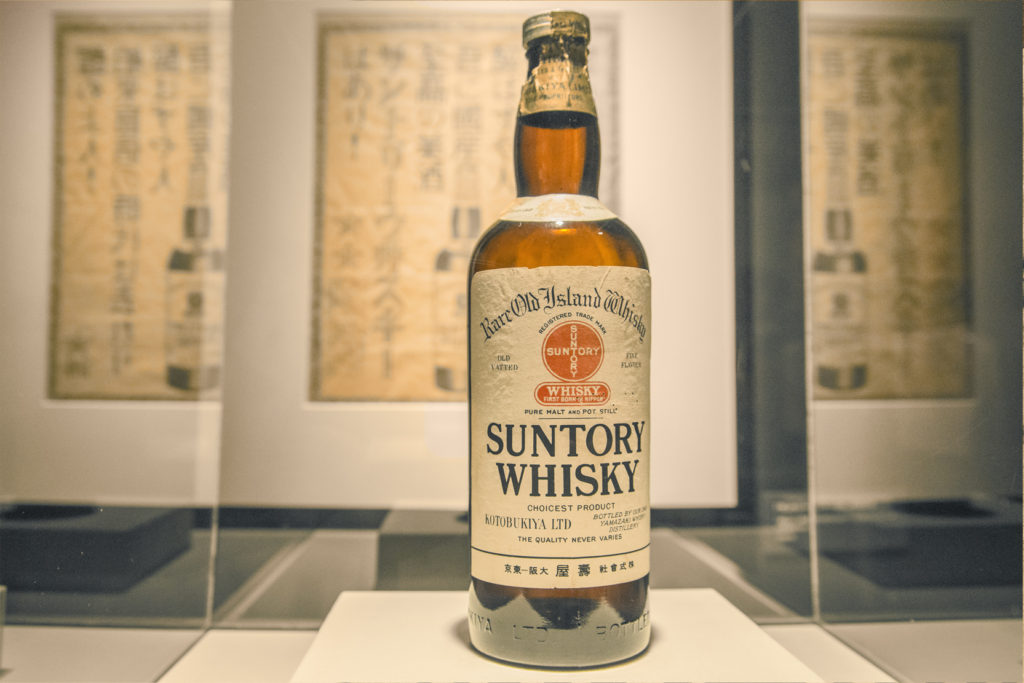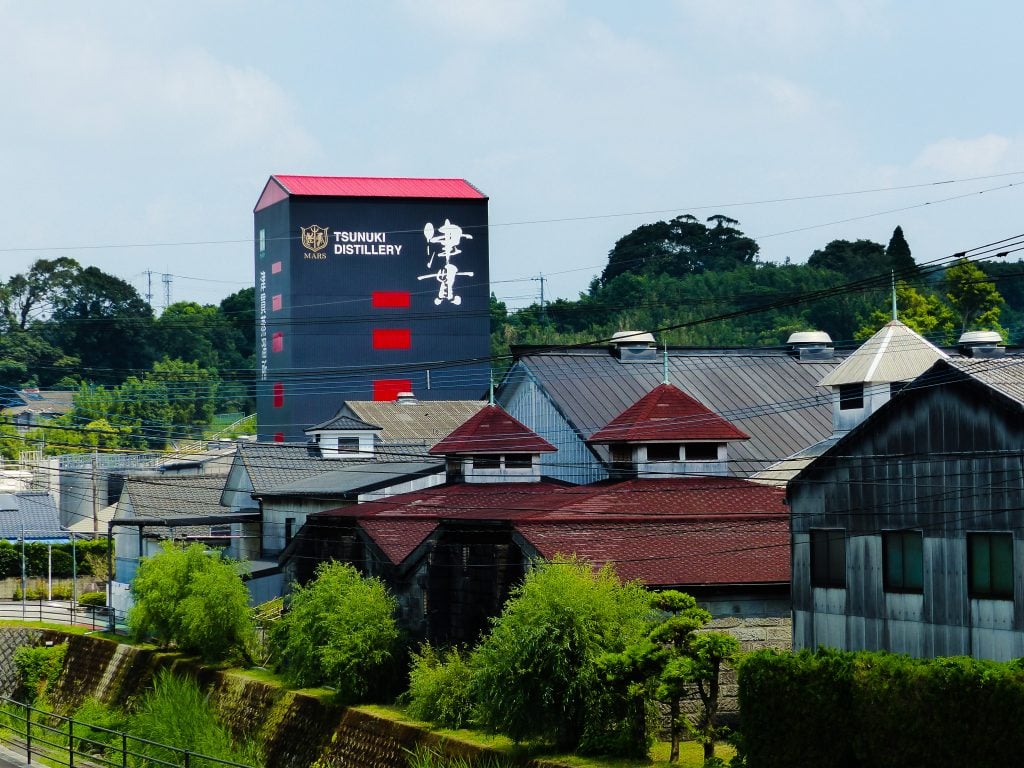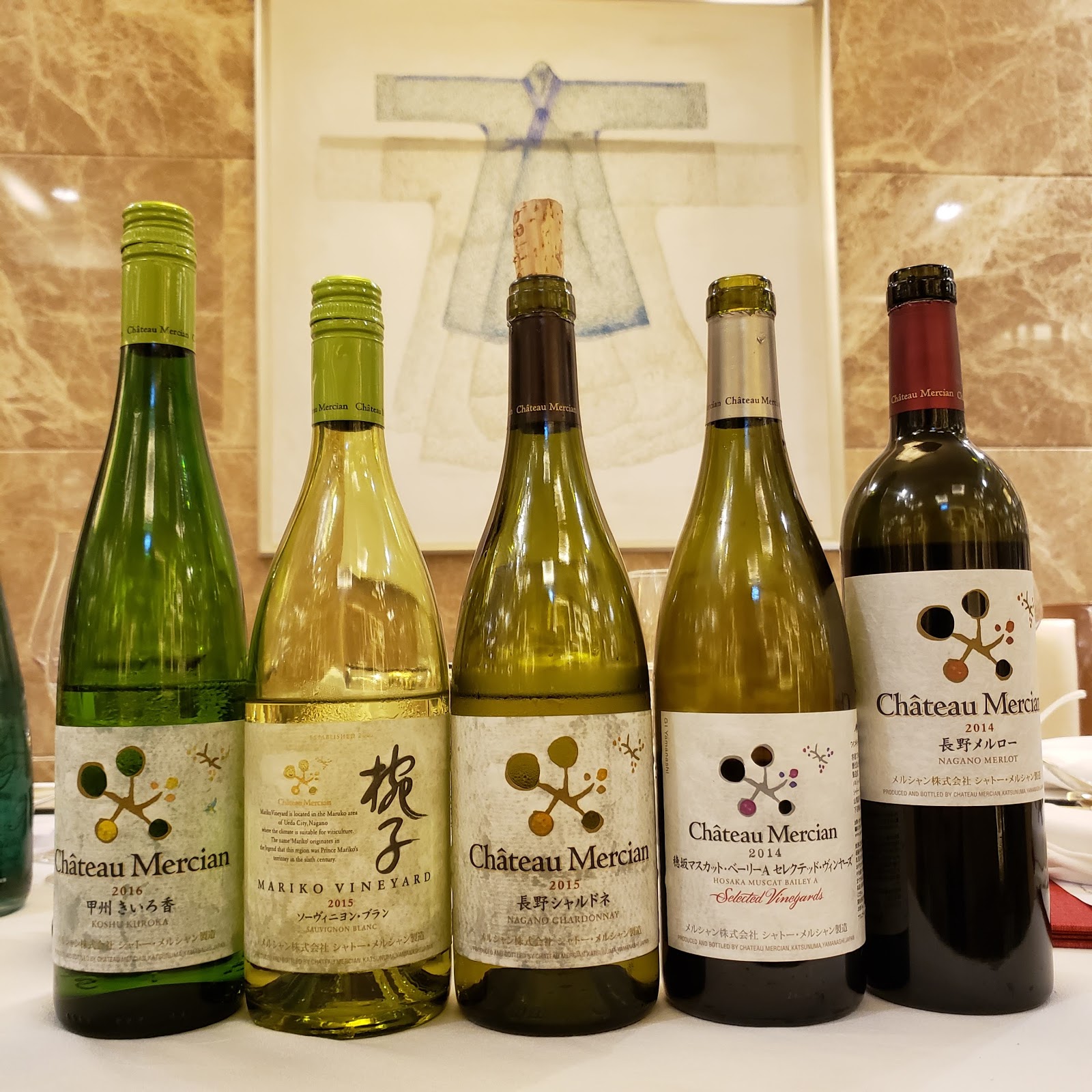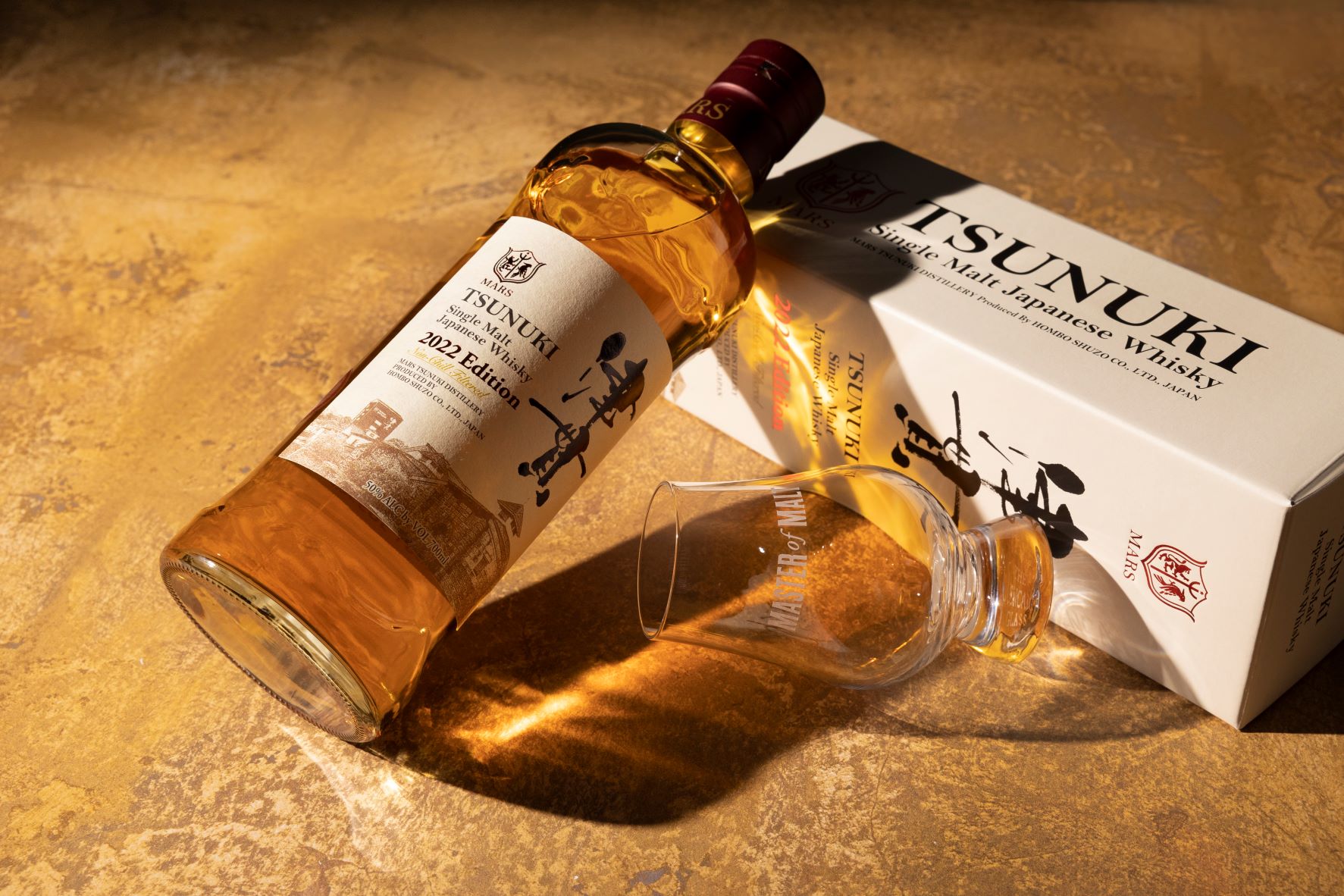Two Japanese Whiskymakers You Should Know About And Their Role In Shaping Japanese Whisky
 Kirin's rebranded Fuji Distillery at the foot of Mt Fuji. (Image Source: WhiskyBase)
Kirin's rebranded Fuji Distillery at the foot of Mt Fuji. (Image Source: WhiskyBase)
Talk Japanese whiskies and everyone knows the big boys.
Yet, I often find it unfortunate that other noteworthy contenders (and let’s hold off on the new wave of craft distilleries for this piece) are simply excluded from the conversation – when in fact domestically they are just as much the staples as the big producers – nay, they are sufficiently large producers themselves. But more importantly, they produce good whiskies that fly under the radar of those interested in enterin the exceptionally hot Japanese whisky fray.
We’ll talk about two of these contenders – Mars Whisky and Fuji Gotemba Distillery. We’ll cover the ghost distilleries that continue to cast a long shadow over the Japanese whisky scene in another piece.


Mars' new Tsunuki Distillery right in their hometown of Kagoshima. (Image Source: Japanese-Whisky.com)
A Deconstructivist's View
Mars Whisky, and parent Hombo Shuzo, are probably the least well known of the big Japanese whisky companies. I don’t even have to spell out who the other two are, you already know who I’m talking about.
But it wasn’t always this way, and I mean that in at least three ways – the key Japanese whiskymakers weren’t always the same bunch of usual suspects, they weren’t always the global phenomenon they are today, and they share a much more interconnected relationship than is as publicized today.
Things Have Changed Dramatically
Have you heard of Mercian, the Tokyo-subsidiary of Kirin and owner of the now defunct Karuizawa distillery, or the also defunct Hanyu Distillery, which later heralded the now beloved Chichibu Distillery helmed by Ichiro Akuto? People keen on the Japanese whisky scene certainly know of them, but for those, like me, who’ve entered the fray only in the last 10 years, know them more as the storied myths they now are than the liquid they once produced. They may not have enjoyed the scale of some of these bigger outfits, but they were serious players as well.
![]()
The now defunct Karuizawa Distillery. (Image Source: Dekanta)
Which leads to my second point, being that even with the now highly-recognised and sought after whiskies they produced, it did little to help these producers survive the darkest hour before the dawn of Japanese whiskies – the drought before the rain. Today, any outfit one-half the size (and perhaps even competency, as well) of those producers have more access to crowdfunding than they probably enjoyed through their existence. Any whisky newborn, receives about as much adoration as the royal couple’s baby – there is no shortfall of private cask buyers who’ll ensure sufficient liquidity for the distillery in-waiting for the minimum age to bottle their whiskies, every newmake is completely sold out in a matter of minutes, to the point that ballots are necessitated.
Safe to say, things weren’t always like this. Keep in mind that the later acquirers of Karuizawa and Hanyu (as luck would have it some keen eyes had spotted the opportunity and took little hesitation to act upon them) had actually rather dump out the whiskies for waste rather than to even consider bottling them for sale – it was that bleak.
A Shared History
Now to my last point, it may seem like the Big Three whiskymakers (note that I still have not named the other two aside from Mars, but really is there any need to?) are pretty much standalone, executing on their own strategies, producing their own whiskies, with not much difficult garnering eyes for new releases – the same one trick pony, really. It’s the cycle that never fails (yet!). Yet, they share a very interconnected history. Most would know of Masataka Taketsuru (of Nikka, there I finally named one of ‘em) having gone on a voyage to Scotland to study how to make good “classic” Scotch, only to return to work with Shinjiro Torii (of Suntory, there you go, the last of the Big Three to be named) in building Yamazaki Distillery. Due to purported creative differences, he would depart to start his own distillery, the Yoichi Distillery in Hokkaido, under the company Nikka, which took its name from the words Dai Nippon Kaju, or “Great Japanese Juice Company”.

The Dai Nippon Kaju was key to the Japanese whisky story, but lesser know is the influence Kiichiro Iwai, who would later start Mars Whisky, had on the bigger picture. (Image Source: SCMP)
Lesser known, is that it was Kiichiro Iwai, who was Taketsuru’s senior from the same Sake brewing program in Osaka Tech, who had roped Taketsuru into his first job out of college, the Settsu Brewery. He had such a big hand in shaping Taketsuru (and arguably Japanese whisky) development that it was him who landed Taketsuru a meeting with the head of Settsu Brewery, where he would convince them of the merits of sending Taketsuru to Scotland in order to apprentice with the best Scotch distilleries of the time. When Taketsuru had returned, unfortunately Settsu Brewery no longer had the funding needed (if only they could crowdfund as they do now!) to support Taketsuru’s whiskymaking, which landed him into the hands of Shinjiro Torii of Suntory. That said, Taketsuru had handed over a report to Iwai, detailing all he had learnt from his time in Scotland, which eventually led to the creation of Mars Whisky, under Hombo Shuzo, a company that had at the time primarily produced wines and Shochu. In fact, Iwai had on his own built perhaps one of the earliest pot stills made domestically in Japan, based off Taketsuru’s report.

Kiichiro Iwai, the man who set Taketsuru on a quest to bring to Japan the art of whiskymaking. (Image Source: Japanese-Whisky.com)
Funny how, none of the Big Three mention much about this – and why should they? Over the course of the last century (Yamazaki Distillery was opened in 1923), they’ve each charted their own paths and have grown from strength to strength, with little need to (and perhaps even considered to be at their detriment) acknowledge each other.
Mars Whisky Re-Emerges
The natural question to follow then is, why is it that Mars Whisky has not enjoyed the same reputation than Suntory and Nikka have, if after all, they practically began their journeys from the same start point (give or take).
The straightforward reason is often pointed at Mars coming onto the scene much later than its compatriots, Yamazaki Distillery started in the early 1920’s as mentioned, while Yoichi was to follow in the early 1930’s, with Mars’ original Yamanashi factory only debuting whisky production in 1960. By the time Mars came onto the scene, Suntory and Nikka had already captured a significant mindshare amongst the local consumers.

Some argue that Suntory and Nikka had an almost four to five decade long headstart which is responsible for their strong market share. I beg to differ. (Image Source: The Japanese Bar)
For several reasons, I don’t necessarily think that is the main reason – for one, Hombo Shuzo was a pretty big conglomerate of its own right with the financial ability to jumpstart and speed up production (and quality production somewhat, with better equipment) and also had the existing distribution means to push out its whiskies; it was already selling a range of other liquors and spirits quite extensively. And then secondly, what about Ichiro’s Chichibu Distillery; a small craft producer whose recognition rivals that of Suntory or Nikka, in just over a decade. If one had the means and know how to make good whisky (and Mars certainly does make quality produce), and could get it into the public’s eye – I doubt a first mover advantage would be that significant an obstacle.

Mars just seemed alittle more preoccupied with everything from Shochu to Red Wine which were much more popular at the time, as opposed to whisky. (Image Source: Vivino)
Yet, I suppose the answer could be found in the original intention behind each company’s creation – Suntory came about as a result of Shijiro Torii’s desire to push past being a wine importer which necessitated creating their own product, whisky; Nikka was borne out of Taketsuru’s desire to manifest whiskymaking as he had learnt from his time in Scotland, and then you have Hombo Shuzo, whose primary business was in producing their own Shochu, and later wines at Yamanashi, and also their own beers; whiskies was just another product extension for a company that felt like they were doing fine as they were. If Iwai had not come along, it is well possible that the company would’ve never ventured into whiskymaking.
The point I’m making is that whiskies never were a main priority for the company. In fact, these alcoholic beverages is only the tip of the iceberg when it comes to the conglomerate’s business activities.
Mars' Shinshu Distillery located in the cooler climate Nagano Alps. (Image Source: Tokiwa Imports)
As a result, since Iwai kickstarted the whiskymaking operation in the company’s then wine facility in Yamanashi, Mars has had five whisky production centers till date, each with spotty operational track records, with the shortest being the Kagoshima Factory (which ran for 5 years), and the longest being Mars Shinshu in the Nagano Alps, which itself took a hiatus from 1992 to 2011 (you can read more about their history over at Nomunication). Now, with the enticement of a booming Japanese whisky market, Mars has added two more facilities, Tsunuki and Yakushima (an aging facility).

The new Tsunuki Distillery should make for some interesting blends from Mars, producing heavier bodied, fruitier whiskies from its warmer Kagoshima climate. (Image Source: Master of Malt)
Tsunuki, in particular, being Mars’ second distillery located in the warmer Kagoshima, enabling Mars to produce a new style of whisky, thicker, heavier and more fruit-forward; completely different from what is produced at Shinshu in the cold Nagano Alps. This was a production strategy that mirrored Suntory and Nikka, both of which have multiple distilleries in different climates in order to produce differing styles of whisky. While this was meant to give Mars more breadth in terms of blending ability, with more whisky styles to play with, the Tsunuki releases have been quite the hit with drinkers who really seem to enjoy the more textural, full-bodied, fruitier malt whisky.
Yet with all these frequent switch-ups, it is no surprise that the brand finds it hard to forge a reputation, much less have the production means to eke out the much-beloved marketing tactic of creating many limited edition expressions to keep the people going. That isn’t to say they don’t make good whiskies, it just means their ability to be a constant in the limelight has left much to be desired.
Another History Maker, Kirin

Fuji Distillery, while a stalwart, has often been excluded from the conversation when it comes to Japanese whiskies, but in actuality produces some incredible grain whiskies. (Image Source: Whisky.com)
Here’s another whiskymaker that has been a big player in the Japanese whisky scene but also does not take up much of the limelight – Kirin. As you might recall, earlier I had mentioned Mercian, Kirin’s Tokyo-based subsidiary; well, as it turns out, when Kirin had acquired Mercian for their wine division (Chateau Mercian was at one point the most widely available wines in Japan), they had unfortunately also come into ownership of Karuizawa Distillery (producing malt whisky) and Kawasaki (producing grain whiskies). Yet, Kirin already had their own outfit – Fuji Gotemba Distillery, or most recently renamed Mt Fuji Distillery, which was a joint venture between Kirin, Seagram and Chivas. And unlike many of the whisky producers in Japan, Fuji Gotemba was perfectly able to produce both malt and grain whiskies on its own, and quite efficiently at that. This largesse in production eventually precipitated the closure of Karuizawa and Kawasaki distilleries (which are big parts of Japanese whisky history that I will cover in a subsequent piece).
 Chateau Mercian, owner of the legendary Karuizawa Distillery, was once one of the biggest domestic players in the wine industry. (Image Source: LeDomduVin)
Chateau Mercian, owner of the legendary Karuizawa Distillery, was once one of the biggest domestic players in the wine industry. (Image Source: LeDomduVin)
Unbeknownst to many, Fuji Gotemba has actually been operating since the early 1970’s with a focus up until recently on blended whiskies (which were much more popular than single malts back in the day). Unlike their more well-known counterparts, they haven’t really had much of an supply issue keeping up with the huge demand for Japanese whiskies, mostly because they weren’t very well known. As with Mars, it could be said that Fuji had a late start, but I’d contest that much like Hombo Shuzo, Kirin’s extensive (non-whisky) beverage businesses meant that whiskies never really were too big a priority up until recently. Like Mars, this is also evidenced by their recent spate of investments into upgrading the distillery, and for them, rebranding it to the new Mt Fuji moniker.

Kirin's Fuji Gotemba had long made blended whiskies that catered to a different generation of drinkers - an older crowd that preferred their whiskies in a highball as opposed to sipped as a single malt. (Image Source: Whisky Mag)
All this was only largely possible and catalyzed by a breaking up of the original joint venture, with Seagram and Chivas pulling out, leaving Kirin to run the distillery on its own, clearing the way for Kirin to make some much needed changes and to press on ahead. Since, Kirin has undergone their rebranding exercise with no expense spared as they deployed some heavy investments into new pot stills and enlarging their facility. A unique feature of which is that Kirin actually does their entire operations on their single facility, rather than split up the work all around Japan, as other big beverage conglomerates have.
Their new set-up is pretty unique as well. The distillery has several pot stills that enables three configurations for their grain still thereby producing a spectrum of styles ranging from light to medium and heavy.
 Kirin's Fuji Distillery has one of the most unique grain whisky production set ups in Japan, with equipment that is found in nowhere else aside from the US - a legacy left behind from ex-partners Chivas and Seagram. (Image Source: Japan Whisky Tours)
Kirin's Fuji Distillery has one of the most unique grain whisky production set ups in Japan, with equipment that is found in nowhere else aside from the US - a legacy left behind from ex-partners Chivas and Seagram. (Image Source: Japan Whisky Tours)
The pot stills used are:
- Kettle Pot Still - Soft, rich and fruity style, which takes longer than continuous distillation.
- Doubler Pot Still - Bourbon-style heavy type
- Multi-Column Pot Still - Scotch-style light type grain distiller

The various unique stills used by Fuji Distillery. (Image Source: Fuji Distillery)
What's interesting is that the Kettle and Doubler pot stills are completely unique to the US and Fuji Distillery possesses the only of such pot stills outside of the US. You might wonder how these got here, and the answer goes back to the original joint venture between Kirin, Seagram and Chivas, the latter two of which exported a good amount of production know-how to the distillery. This partnership made sense back then given Fuji’s servicing of the strong demand for blended whiskies domestically pre-2000s, and again as a sign of the times, Fuji only began producing single malts in 2004, yet interestingly they also sit on some 18 Year Old single malts (the Sanroku) and 30 Year Old grain whiskies, which they retail.

The distillery produces some incredibly good grain whiskies. (Image Source: World Whiskies Awards)
All that has actually produced a pretty good tasting Single Grain whiskey thus far. For the price, it tastes even better. Unfortunately, the only thing holding them back is probably the poor perception they've languished with being a supermarket whisky for a long time up until Kirin could clean things up, and the lack of aged malt whisky stock, which they are trying to fix right now, but unfortunately will simply take time.
Japanese Whisky Expanded
With Japanese whiskies in high demand, the truth of the matter is it isn’t the reality that everything is always sold out or exceptionally hard to get your hands on – of course, big marketing budgets for close to a century mean that Suntory and Nikka occupy the immediate minds of most drinkers, yet Japanese whiskies are so much more than that. Over the last decade, many historic players have refocused their attention onto producing high quality whiskies – producers like Mars and Fuji certainly have been around much longer than you would ordinarily think and possess the know-how when it comes to producing good whiskies.

Mars' Tsunuki single malts have won much praise and I think these folks are onto something here. (Image Source: Master of Malt)
With their spate of reinvestment, we’re already starting to see the early signs of what they are capable of – Mars’ Tsunuki single malts have been spectacular, while Fuji just debuted their new single blended whisky (if you’re unfamiliar, don’t worry, it’s not a term commonly used, but it does mean Mt Fuji Distillery is making blends of malt and grain whiskies produced by themselves). It’ll be exciting to see what these producers will come up with in the coming decade.
Don’t limit yourself to what is most conspicuous, give them a shot and you’re probably going to find some incredible whiskies and much more reasonable prices, that won’t take the Gods on your side to get your hands on.
Kanpai!

@111hotpot








